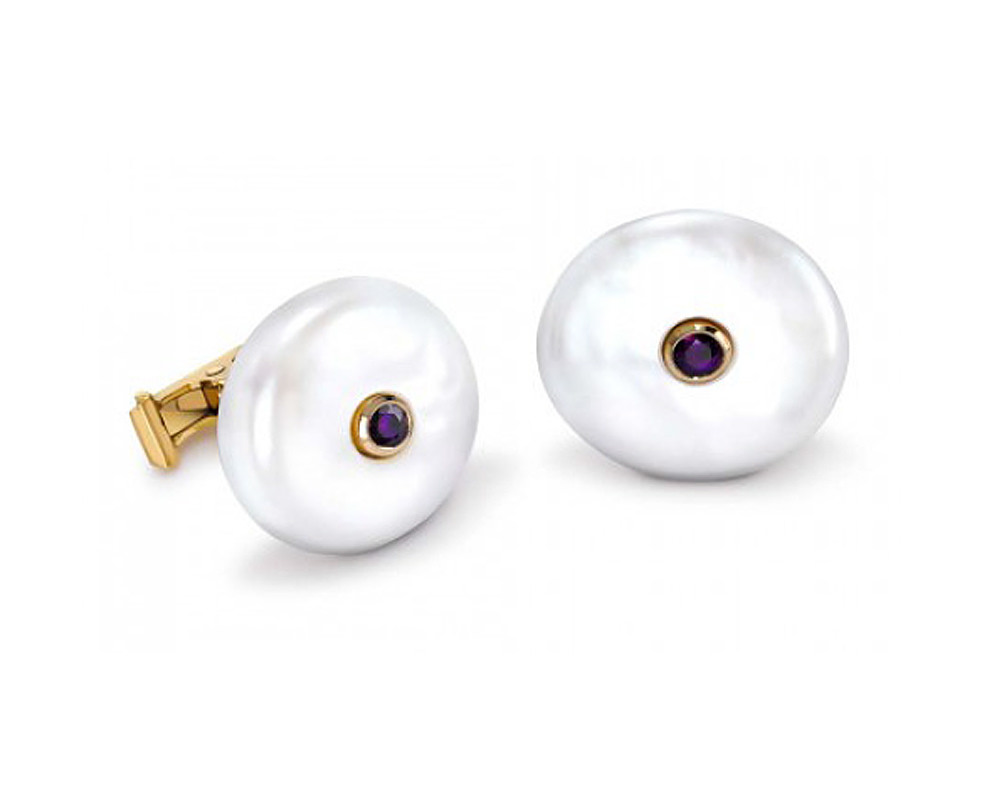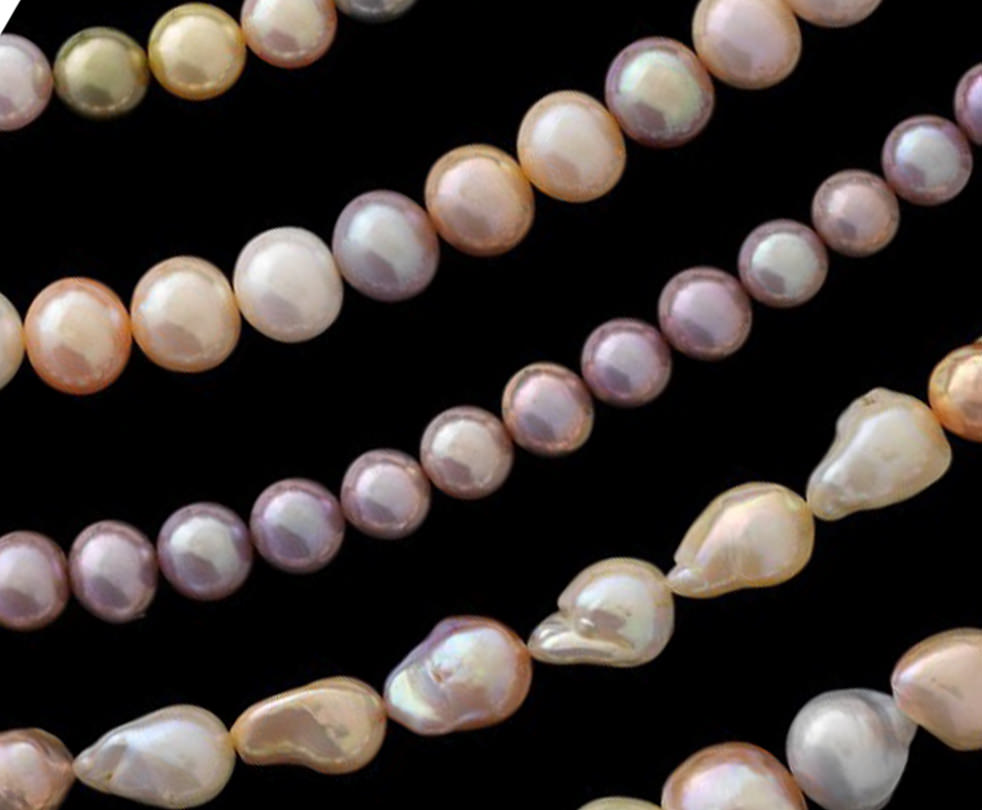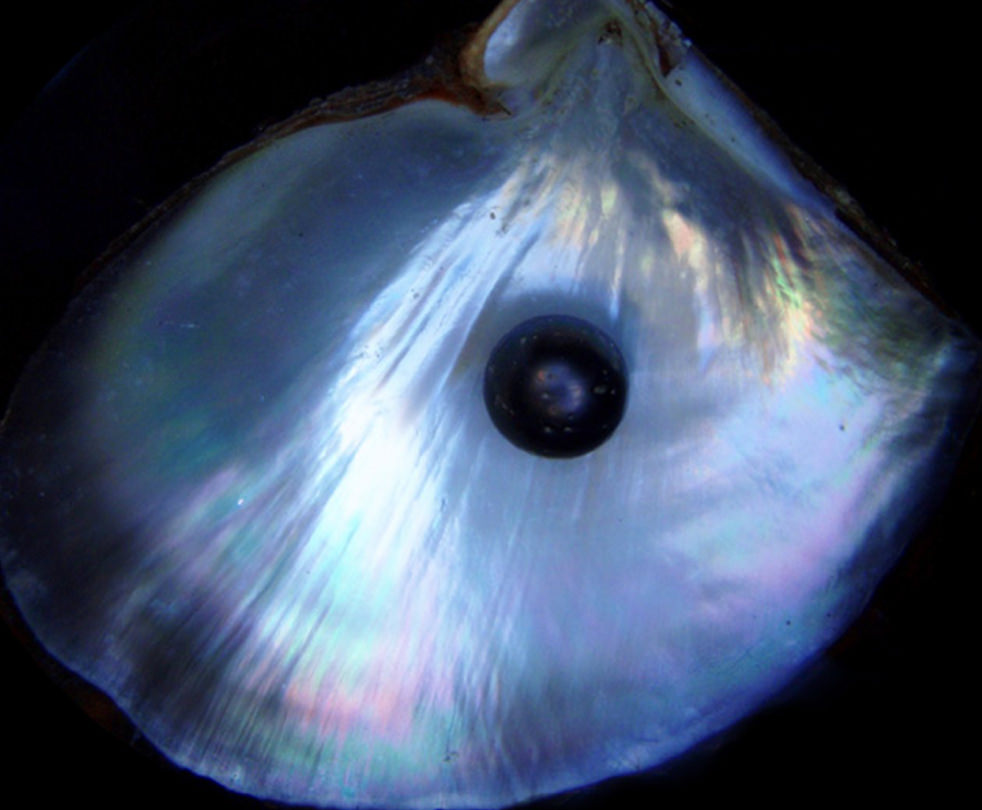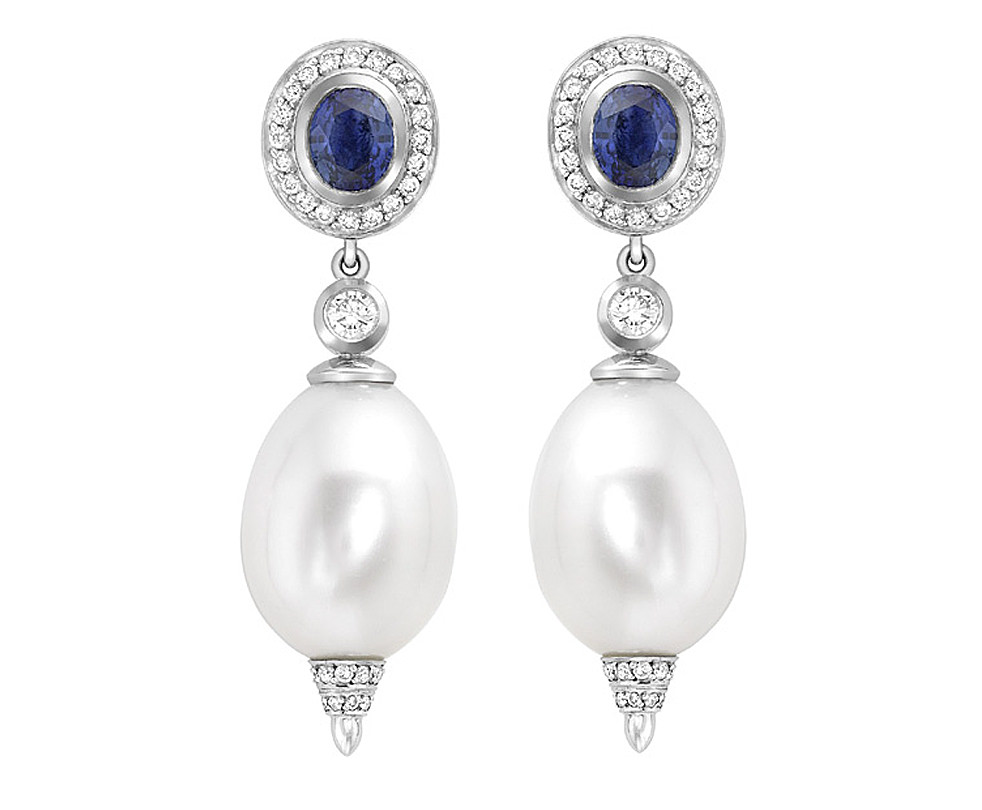Pearls
Pearls can be saltwater or freshwater and produced entirely by a natural process or they can also be cultured whereby the growth is artificially initiated. They are formed in molluscs (oysters or mussels) as a defense against an irritant such as a parasite. The mollusc reacts by encasing the irritant in layers of nacre, which is a hard calciferous material like their own shells. Natural pearls are becoming increasingly rare and highly sought after with top quality examples costing hundreds of thousands of pounds. They were traditionally found in some of the most beautiful areas of the world, the Persian Gulf, Gulf of Manaar (between Sri Lanka and India), and the South Pacific for South Sea pearls.
The pearls were collected by free divers who were able to descend a long way on a single breath with no equipment. Cultured pearl production is now a huge industry but began in 1896 when Kokichi Mikimoto first succeeded in his ambition to create pearls. It took a few years to perfect the procedure, whereby a shell bead is implanted into an oyster around which the pearl will form, with good quality Japanese cultured pearls first appearing on the market around 1905. Needless to say the price difference between natural and cultured pearls is huge and only increasing.
Pearls come in a wide range of sizes, colours and even shapes. The tiniest are seed pearls which are only about 1mm whilst the largest are the South Seas which have been known to exceed 20mm in diameter. Naturally, they come in colours such as white, grey and golden largely depending on where they grow and what the oyster or mussel eats. As a natural, organic product, pearls need to be treated with some care as they can be damaged by hair spray, scent and many cosmetics. They should be cleaned with warm water and a soft cloth and as the old adage goes, “be the last thing you put on in the morning and the first thing you take off at night.”
In ancient China, pearls were believed to guarantee protection from fire-breathing dragons, whereas in Europe, they have traditionally been associated with purity and innocence, hence their popularity in wedding jewellery. We like to spice things up and mix these beautiful lustrous gems with our signature skulls, crosses, bees and bright colourful stones.
Description: Pearls are one of the earliest gems used for self adornment and were once more highly valued and sought after than diamonds. They come from both rivers and seas and being organic are fairly soft.
Hardness: 3 on Mohs Scale
Birthstone: June








